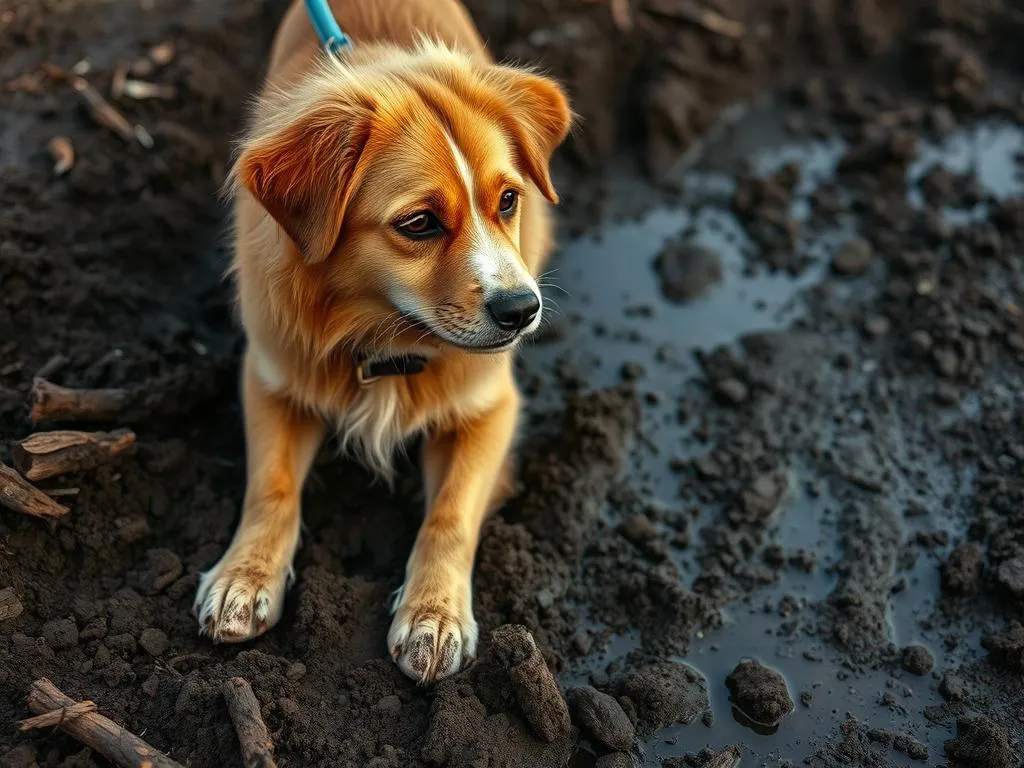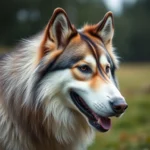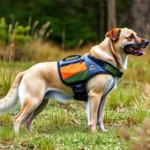
Dogs are fascinating creatures, and their behaviors often leave us puzzled. One of the more curious habits that many dog owners observe is their canine companions’ affinity for mud. Whether it’s rolling around in a muddy puddle after a rainstorm or digging into the soft earth, dogs seem to have an innate attraction to mud. Understanding why dogs like mud can help us appreciate their instincts and behaviors more deeply.
The Natural Instincts of Dogs
Ancestral Behaviors
To comprehend why dogs engage so eagerly with mud, we need to look back at their wild ancestors. Dogs evolved from wolves, which exhibited various behaviors that were essential for survival. These ancestral behaviors include hunting, foraging, and exploring their environment. By digging and playing in mud, dogs may be tapping into these primal instincts, allowing them to express their natural tendencies in a safe environment.
Sensory Exploration
Dogs experience the world primarily through their sense of smell and touch. Their noses are equipped with an astonishing number of scent receptors, making them natural explorers. When dogs come across mud, the texture and scent provide an exciting sensory experience. The rich, earthy smell of mud stimulates their olfactory senses, while the cool, squishy texture invites tactile exploration. This sensory stimulation is vital for dogs, as it helps them learn about their environment and satisfy their curiosity.
The Benefits of Mud for Dogs
Cooling Off
One of the most practical reasons dogs seek out mud is for its cooling properties. Dogs do not sweat like humans; instead, they rely on panting and other methods to regulate their body temperature. In hot weather, mud can provide a refreshing respite. By rolling in mud, dogs can lower their body temperature, similar to how they would use water or shade to cool down. Unlike a kiddie pool, mud is often more accessible and can provide a longer-lasting cooling effect.
Skin Health
Mud isn’t just a fun plaything; it also offers some surprising health benefits. Natural mud contains minerals that can be beneficial for a dog’s skin and coat. These minerals can serve as a natural exfoliant, helping to remove dead skin cells and promoting a healthy, shiny coat. Additionally, mud can provide relief from skin irritations, as it can help to soothe itching and inflammation. Just be sure to rinse your dog after a mud bath to avoid any lingering dirt or debris.
Play and Socialization
For many dogs, mud serves as a medium for play and socialization. Dogs are inherently social animals, and mud can enhance their interactions with other dogs. When dogs play together in muddy areas, they engage in behaviors that can strengthen bonds and build social skills. The joy of splashing through mud can lead to increased playfulness and camaraderie, making mud a facilitator of fun and social interactions.
Behavioral Explanations
Fun and Playfulness
At the heart of a dog’s attraction to mud lies their playful nature. Dogs are naturally curious and love to explore their surroundings. Mud offers a unique opportunity for them to engage in playful behavior. When dogs roll, dig, or jump in muddy areas, they often exhibit signs of joy, such as wagging tails and excited barks. This playfulness is not only enjoyable for the dog but also serves as a form of exercise, contributing to their overall physical health.
Attention-Seeking Behavior
Interestingly, dogs may also engage in muddy antics as a form of attention-seeking behavior. Many dog owners react strongly to their pets coming home covered in mud, whether it’s laughter, exasperation, or a mix of both. Dogs are highly attuned to human reactions; they can learn that rolling in mud elicits a response from their owners. This understanding can lead them to repeat the behavior, further embedding mud play into their routine as a means of garnering attention, whether positive or negative.
Common Myths About Dogs and Mud
Mud is Dirty and Harmful
One prevalent myth about dogs and mud is that it is inherently dirty or harmful. While it’s true that mud can contain bacteria or parasites, in many cases, it is not dangerous for dogs. Many dogs have built-in immunity to common outdoor germs, and a little mud isn’t likely to harm them. In fact, exposure to various bacteria in mud can help strengthen their immune systems. The key is to ensure that the mud is free from harmful chemicals or contaminants.
Dogs Only Roll in Mud When They’re Bad
Another common misconception is that dogs roll in mud as a sign of bad behavior. This perspective often leads owners to scold their dogs for getting dirty, perpetuating a negative view of their natural instincts. Instead, it’s crucial to understand that dogs engage in this behavior for various reasons, including exploration, cooling off, and sheer enjoyment. Recognizing that mud play is a natural inclination can help owners appreciate their dogs’ behavior rather than view it as mischief.
Managing Mud Play
Safe Mud Play Areas
If your dog loves to play in mud, creating a designated mud play area can be a great solution. Look for a section of your yard that can be easily fenced off, allowing your dog to explore without roaming too far. Ensure the area drains well after rain, preventing standing water that could harbor mosquitoes or other pests. Consider mixing the mud with sand or gravel to improve texture and drainage. This space can provide your dog with a safe zone to indulge in muddy play while keeping the rest of your yard tidy.
Cleaning Up After Mud Play
Cleaning up after a mud adventure can feel like a chore, but it doesn’t have to be overwhelming. Here are some best practices for managing the post-mud cleanup:
- Prepare Ahead: Keep a towel or pet wipes near your door for quick clean-ups after muddy playtime.
- Designate a Cleaning Area: Use a specific spot in your yard or garage for cleaning your dog after mud play. This will help contain the mess.
- Use the Right Products: Look for pet-safe cleaning products that can help remove mud and odors from your dog’s coat. A good dog shampoo can also help restore their coat’s shine.
Alternatives to Mud Play
Other Fun Outdoor Activities
If mud play isn’t feasible for your dog, there are plenty of other outdoor activities that can provide similar sensory experiences. Consider these options:
- Water Play: A kiddie pool or sprinkler can offer a refreshing alternative on hot days.
- Digging Areas: Create a designated digging zone with sand or loose soil where your dog can dig without making a mess of your garden.
- Nature Walks: Take your dog on hikes where they can explore different terrains, providing sensory variety without the mud.
Indoor Alternatives
For those rainy days when outdoor mud play isn’t an option, engaging your dog indoors can keep their spirits high. Some ideas include:
- Interactive Toys: Puzzle toys that dispense treats can stimulate your dog mentally and physically.
- Indoor Agility: Set up an obstacle course using cushions, chairs, and tunnels to encourage movement and play.
- Sensory Games: Use scents or hidden treats around the house to engage your dog’s natural sniffing instincts.
Conclusion
Understanding why dogs like mud can enhance our relationship with our furry friends. Their attraction to mud is rooted in natural instincts, sensory exploration, and the benefits it provides. While it can be messy, embracing this behavior allows us to appreciate the playful, curious nature of dogs. Instead of viewing mud play as a nuisance, we should recognize it as an opportunity for enrichment and bonding. By creating safe spaces for mud play and providing alternatives, we can ensure our dogs live joyful, fulfilling lives.
For dog owners, the key takeaway is to embrace the muddy moments and understand that such behaviors stem from instincts that are vital for a dog’s happiness and well-being.









